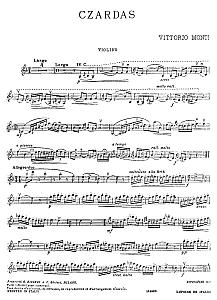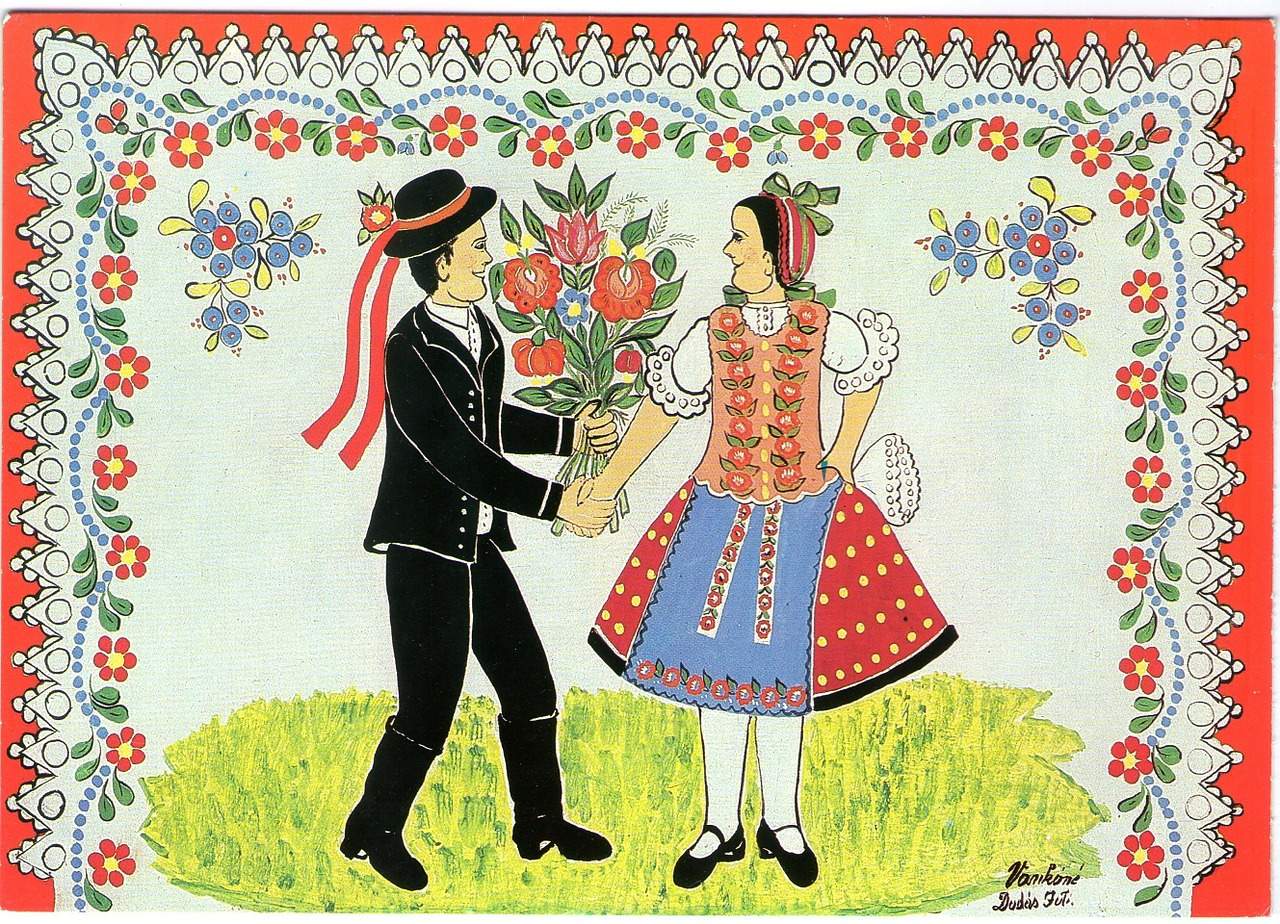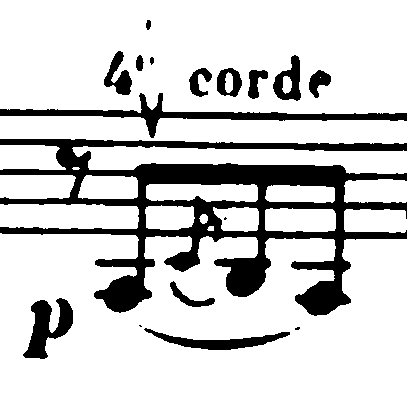
In this post, I’m sharing with you Vittorio Monti’s Czardas violin sheet music and giving you a few tips on how to play it.
The Czardas is one of the most loved violin pieces, and luckily it is in the public domain. You can download the free sheet music here:

Czardas by Vittorio Monti
Free Violin Sheet Music
About Vittorio Monti, the Composer Of Czardas

Vittorio Monti was an Italian composer living at the turn of the 20th century and a contemporary of Scott Joplin. He was born in Naples, studying violin and composition at the Conservatorio di San Pietro a Majella.
Monti, a violinist, and conductor played the mandolin as well. This piece was originally for violin, mandolin, and piano, but later different arrangements were created, most commonly one for violin and orchestra and one for violin and piano.
Free Violin Sheet Music
Here is the free sheet music [PDF], to help you learn this piece:

Czardas by Vittorio Monti
Free Violin Sheet Music
About Czardas by Vittorio Monti
The Czardas was inspired by the Hungarian folk dance music ‘csárdás,’ and it successfully passes the energy of the dance. Being written by a classical composer, it is much more elegant and complex than your standard gypsy or folk music.

Preparatory Exercises
This isn’t a beginner piece, but even as a beginner, you can do a few exercises that will prepare you for playing pieces such as this in the future.
Here are some of the exercises that will prepare you to play the Czardas:
1. Practice Sixteenth Notes (Semiquavers)
Take a simple piece, one that is made of mostly eighth notes (quavers), and replace each of them with four sixteenth notes (semiquavers). You may look for words that will help you sound out the rhythm, for example ‘I like pizza’ or ‘fatter than a caterpillar.’

2. Practice Double Stops
Click here to learn about double stops and get eight tips for mastering them!

3. Play One-String Scales
Start with an open string and play the scale starting on that note, so G major and G minor for the G string. Do not move onto a higher string, but keep shifting into higher positions to play all the notes in the scale. Check your intonation from time to time, with open strings or a tuner.
4. Practice Shifting
This can be done with scales, arpeggios, or taking a pair of notes, the starting note you want to shift from and the note you want to arrive at, and shift from the first to the latter. Check your intonation. After you start getting it right, repeat many times to develop muscle memory.
How to Play Czardas on the Violin
The most important thing about this piece is expressing the feel of the dance. An atmosphere of lively gypsy music, the seduction, the beat, and the fun, these are above all crucial.
Part of what creates the atmosphere is the mixture of tempos and moods that change from section to section, so be sure to vary the way you play the consecutive sections.
Like in all pieces, there are two parts of learning it. First, you learn the notes, so you can actually play the melody. Once you’ve learned this, you can start to add style and musicality to it. Of course, you can do that earlier too, but that is not the focus, while you’re learning the bones of the music. At the beginning, if the grace notes are too much, just learn the music without them, and add them in later.
Let’s have a closer look at the beginning of the piece.
Largo, the first part
This part is supposed to be very seductive. Slow and sultry, with really deep voices, we need to reflect the mood by creating a matching sound. For this reason, play the notes in this section on the G string, sliding and shifting up and down.
Start by playing the first three notes slowly, taking your time, playing out the grace note as half of the longer note. Then the long A in the second played bar (bar 6) you reach by creating a small slide with your third finger up to it. Make this slide audible, but not over-emphasized.
You can think of this section as formed of two sentences, each taking half the section, and beginning with the same 4 note motif.

The beginning section, being played on only the G string can also present problems of its own:
- there are many shifts, so take your time to work on playing in tune in those higher positions on the G string,
- playing in such high positions will make your wrist twisted as far as it can go, so remember to practice relaxing your hand.
Largo, the Second Part
The music here is still a slow tempo, apart from the 16th and 32nd notes (semiquavers and demi-semiquavers), which sound faster. It is also meant to feel a little bit stretchy.
- Practice the runs slowly, and stop the bow between notes, before speeding up and playing slurs
- Give extra emphasis to the highest notes after each run.
Allegro Vivace
This part is very fast and full of zest. And to get there, as always, start slowly. The sautille bowing is a special technique, and if you don’t know it yet, it is ok to just play on the strings.
- For clarity, practice slowly. You can never do enough of this.
- To get the feel of the movement, play it through fast, with a lively tempo.
- Pay special attention to the hard bar in the second part of this section – see the picture below.

Molto Meno
This section is slow and sauntering. Allow yourself time for the double stops. It is calmer than the previous sections, a cool respite from the frenetic pace before.
- Play only the top notes to begin with
- Practice double stops separately, then one bar at a time
- Finally, add the grace notes
Meno, Quasi Lento
Still slow and calm, almost airy, the false harmonics take a while to learn. Holding the base note with your first finger, gently rest your fourth finger on the harmonic – the one that’s denoted by the little diamond shape.
- Practice artificial harmonic scales, shifting to each higher note on your first finger, touching the string with your fourth.
- Do not press the fourth finger down.
Allegro Vivace
This section is almost identical to the second part of the previous Allegro Vivace section, only the last three bars are changed.
- Practice the last three bars, paying attention to the shifting.
Allegretto
Still fast, but no longer the energetic and speedy, more a happy dancing feeling. Also note the change in the key signature, which results in a change of the finger pattern you need.
- Practice the new finger pattern slowly, so your hand remembers the difference
- Pay attention to the syncopated rhythm leading to the next section
A Tempo Piu Presto
Continuing on from the Allegretto section, still with a happy feeling, the music gets faster again leading to the last part.
- Keep the happy feeling, speed up a little
Molto Piu Vivo
As fast as the Allegro Vivace, only no longer using sautille bowing, this is the final run. Make your audience ecstatic and on the edge of their seats clapping.
- Play with the joy and energy of this final sprint.
- Finish like you’re a champion!
FAQ
The word czardas is pronounced as chahr-dahsh. It is spelled ‘csárdás’ in the original Hungarian.
You can listen to it in the video:
What is Czardas Music?
The word czardas comes from Hungarian ‘csárdás’, which is the name of a dance in 2/4 or 4/4 time, with syncopated rhythms, and emphasis on the first (and third) beat. It is a folk dance, often played by a gypsy band.
Here is an example of csárdás being danced at a folk festival:
What violin grade is czardas?
On the ABRSM syllabus, this piece was set as grade 8. This means it’s not a beginner’s piece, but an intermediate one. There are numerous techniques one needs to play this, including the artificial harmonics in the Meno quasi lento section, and the sautillé starting in the Allegro vivace section.
In addition to these, the overall complexity of the piece is quite high.
While the left-hand fingerings for the sautillé part are not too hard, apart from two bars, at the beginning of the second line of the second part of the Allegro vice section. Nonetheless, the bowing takes some time to master so please be patient with yourself.


Czardas by Vittorio Monti
Free Violin Sheet Music























